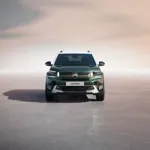At best, the vehicles can be hard to sell – at worst the disposed vehicle may be involved in criminal activity that can damage the reputation of the original operator after it has been sold.
More than 95% of Manheim’s leasing and contract hire customers have all operator signage and branding professionally removed before re-sale for both financial and legal reasons.
However logo removal itself, if not carried out correctly, can result in vehicles needing costly paintwork repair, or remaining marked for life, which can affect resale value.
To help vendors avoid vehicle de-branding pitfalls, here are some top tips for applying corporate branding and logos to new vehicles and effectively removing existing ones.
Use good quality decal material when branding new vehicles
These may seem a more expensive proposition initially, but better quality vinyl, plastic or body wrapping film is quicker and easier to remove cleanly before re-sale.
Removing inferior products can be difficult and time-consuming and can even result in costly paintwork damage.
Ensure bodywork repairers allow paintwork to dry thoroughly before reapplying decals
Operators should be aware that paintwork on vehicles that have undergone damage repair should be allowed to dry for two to three days before the decals are reapplied.
If not, the paintwork may lift off when the decal is removed.
Remove all branding
Branding includes company name and/or trading name, distinctive brand trade marks and logos, company address and contact numbers, email and website addresses.
‘Ghosting’ or paint finish shadowing can often still be seen, particularly on darker paint, even after the branding has been correctly lifted, so it is worth spending a little extra on a machine polish to achieve a consistent finish.
Leave it to the professionals
DIY removal of body wrapping film, vinyl and plastic decals using chemicals, heat or abrasive materials can leave vehicles with scratched, pitted and discoloured paintwork which will need bringing back up to standard.
If adhesive residue is left behind it will attract dust and dirt which will be difficult to remove later on.
Using professionals in the first instance can prove a much more cost-effective proposition.
Bringing vehicles up to a high standard of condition, so vehicles are more likely to sell the first time of asking, can also achieve the optimum price.
It may seem far-fetched to talk about vans being bought with criminal intent, but vendors need to protect their own good name and clients’ reputations.
















Login to comment
Comments
No comments have been made yet.